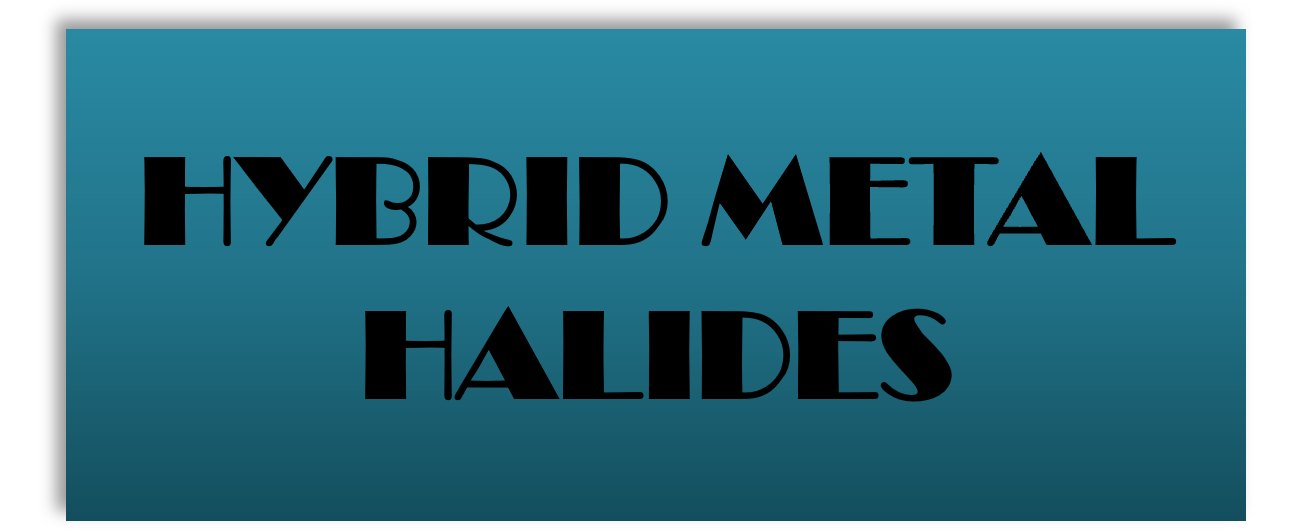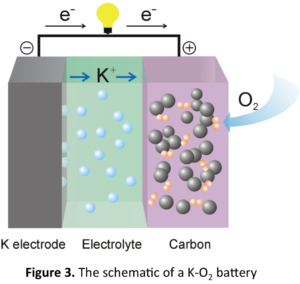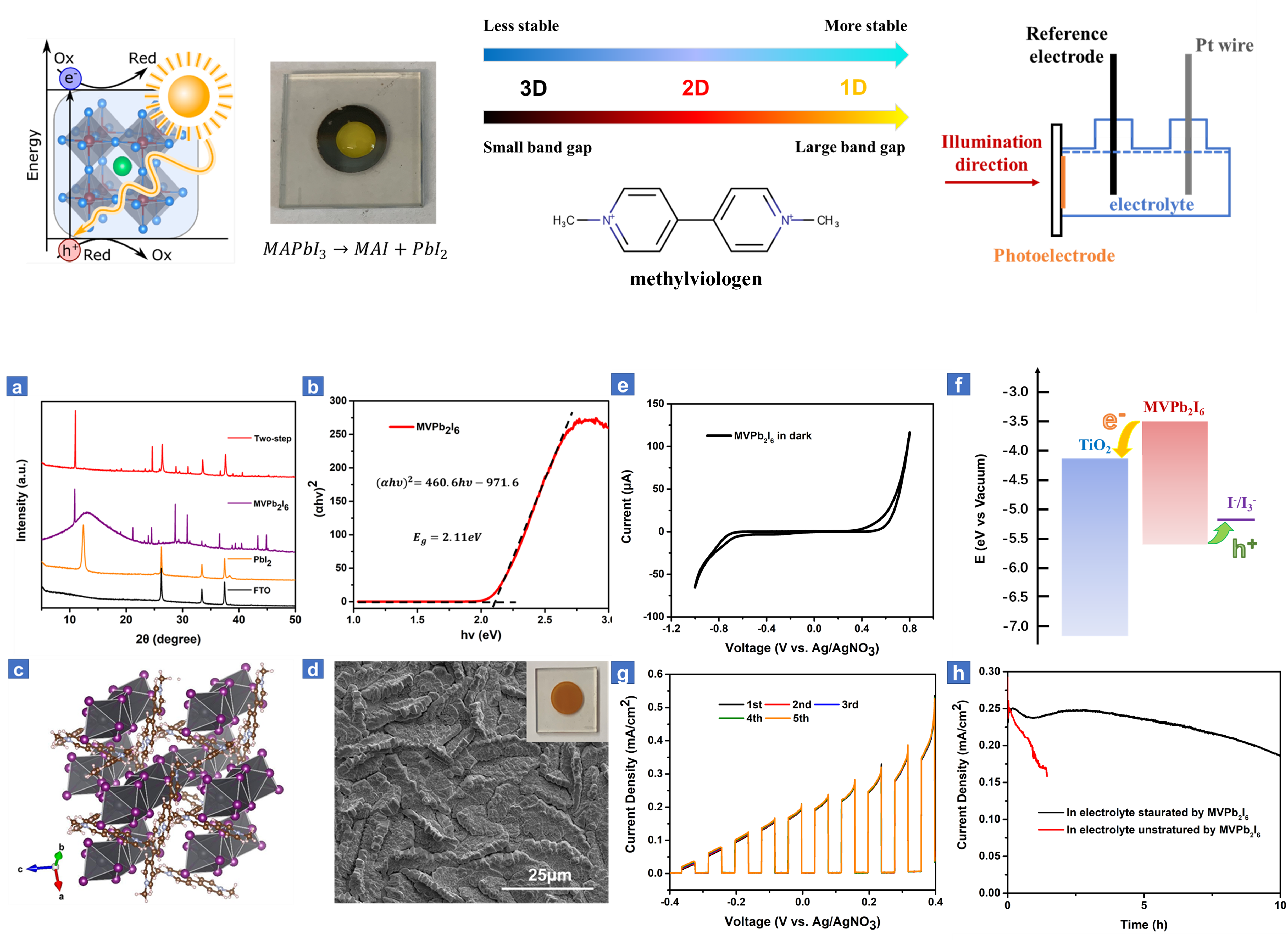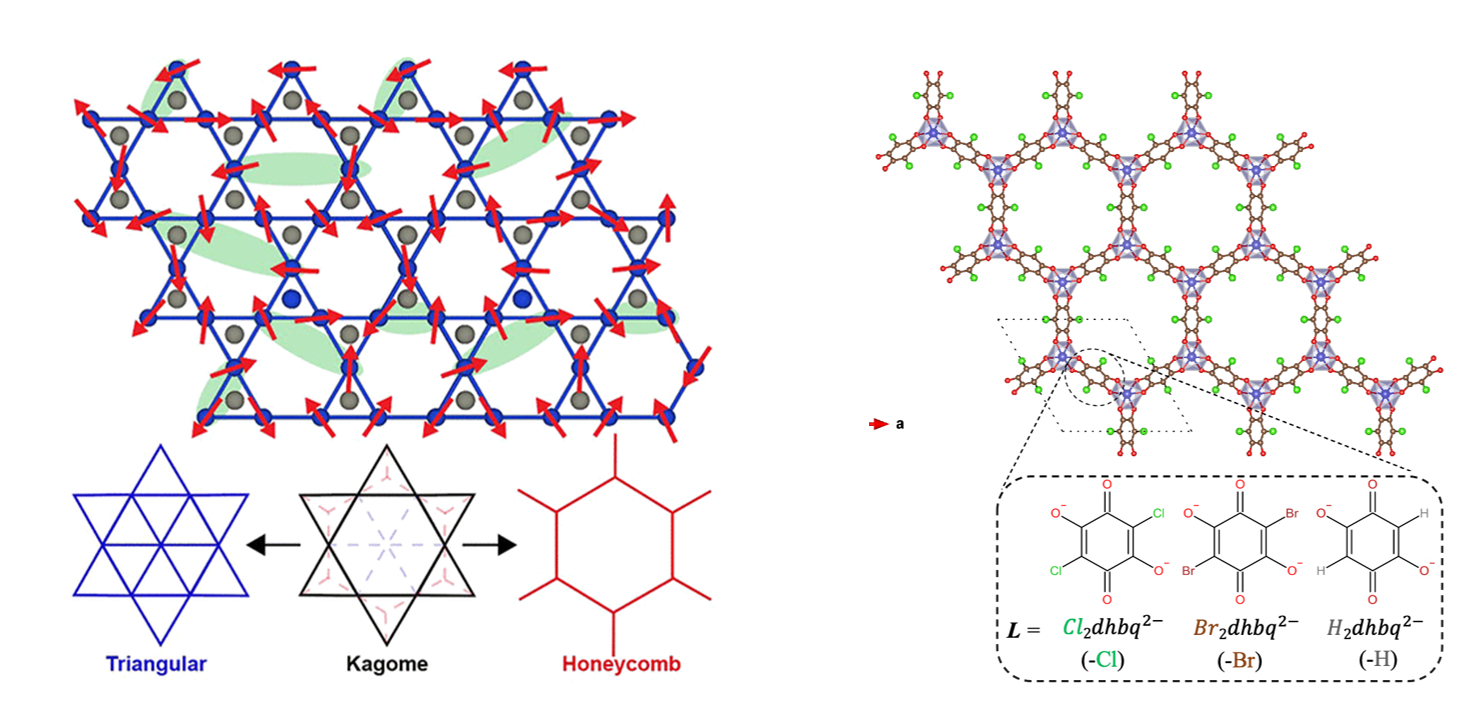Chemistry ⇔ Energy Conversion and Storage
Solid State Materials Chemistry, (Photo)electrochemistry, and Synthetic Molecular Chemistry
Wu group has been working at solid state materials chemistry, (photo)electrochemistry, and synthetic molecular chemistry. Our current focuses are metal-air batteries, alkili metal ion batteries, (photo)electrocatalysts, and solar cells. We utilize knowledge, concepts and techniques from chemistry, physics, materials science and engineering to create new materials, explore new sciences, and enable new applications. We welcome students with various backgrounds to join our group.
Research Areas
Metal-oxygen batteries and potassium secondary batteries
- Metal-air batteries are the most dense electrochemical power sources and are anticipated to play an important role in electrification of transportation and grid energy storage.
- In 2013, Wu group invented K-O2 battery that is based on the reversible one-electron O2/KO2 redox couple, which eliminates the need for these electrocatalysts (Fig. 3). This method has elegantly solved the oxygen reduction and evolution kinetics limit, and brings metal-air batteries closer to practical applications. This invention has received broad attention in the battery community.
- The recent researches mainly involves designing stable anode material, preventing oxygen corssover, and developing new electrolytes, including liquid electrolytes and solid-state electrolytes.
- A potassium-ion battery is analogue to lithium-ion batteriee. Compared with lithium-ion abtteries, the higher abundanc and low cost of potassium make potassium batteries a promising candidate for large scale energy storage.
- This project is funded by National Science Foundation
Hybrid Metal Halides
Quantum Spin Liquids
Solar batteries
- Wu group’s recent breakthrough is in solar batteries based on the idea that photoelectrochemistry could be directly integrated into batteries because both fields use redox couples as the charge-transport shuttles.
- In 2014, Wu group demonstrated a solar oxygen battery that uses solar energy to assist the charging process of Li-O2 batteries (shown above). Later the concept was extended to solar flow batteries that use solar energy to assist the charging process of Li-iodine flow batteries.
- These pioneering works are useful for creating new technology that can directly store the solar energy, which solves the intermittent nature of sunshine.
Click here to explore more details.






